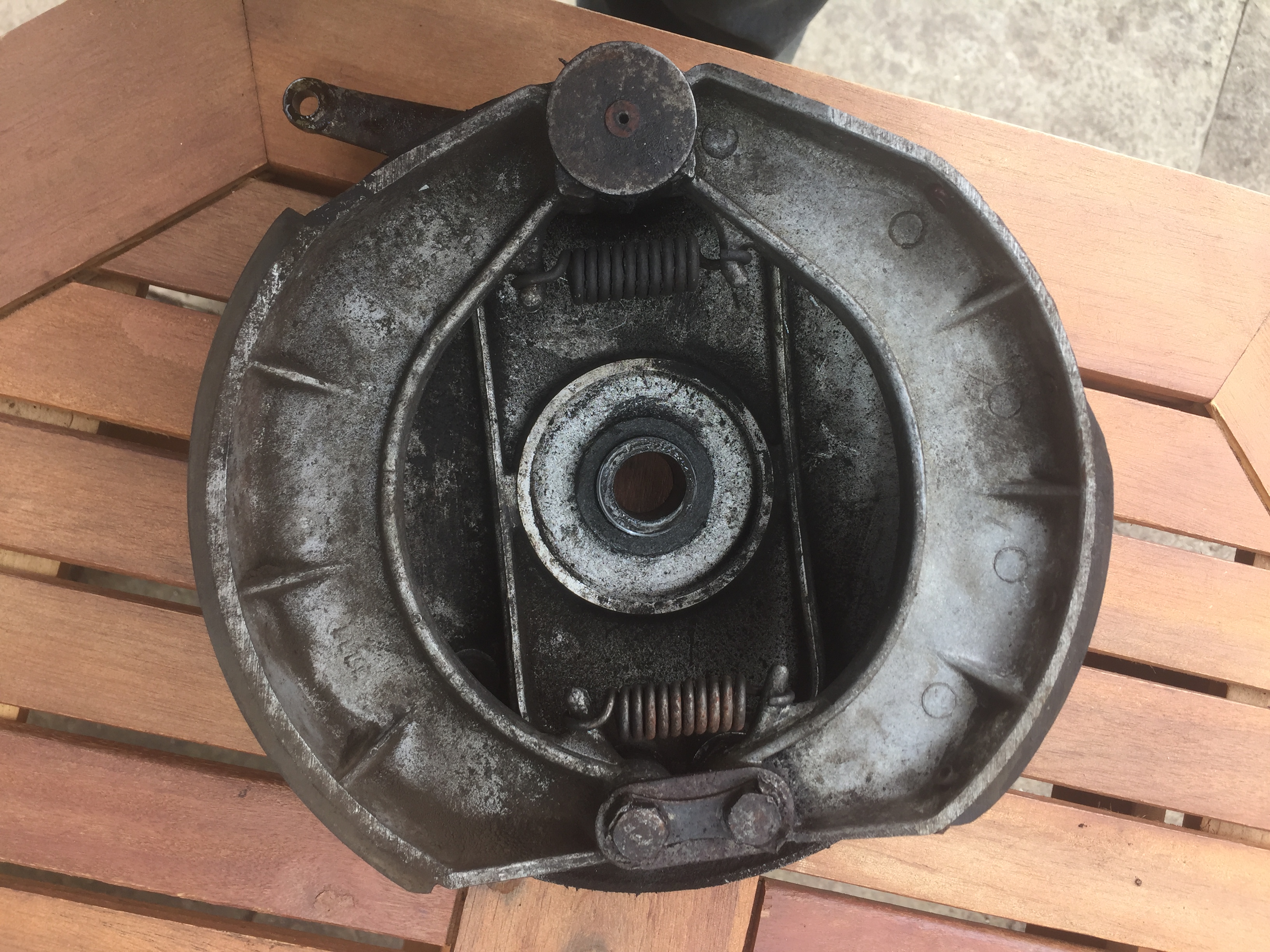Hello Norton people. This is my first post so here goes. From my investigations, I understand that my frame is from a 1956 Dominator. It’s a Triton I bought for £300 some (cough) 40 years ago. My query relates to the current front hub/brake arrangement which comprises two 8” drums bolted back to back and fitted with two brake plates. The brake plates (both SLS), shoes, bearings, distance tube etc appear to be standard Norton components. With this arrangement, one cam lever points forwards and the other back and both brake cables are connected to the handlebar lever via a small articulated bracket. Have any of you guys come across such an arrangement? Any help would be greatly appreciated.
Sounds like two of the…
- Log in to post comments
I will take a photo and…
I will take a photo and attempt to upload. You are correct it is a heavy old unit. Many thanks, Ian
- Log in to post comments
Here is a couple of images…
Here is a couple of images of the double drum. They are bolted hard together of course, with a 5/16 gap between them outwith the bolt group area. The complete unit appears quite robust and to my eye quite well made. I will get the wheels rebuilt on alloy rims and the original intention was to replace the hub and fit TLS however, the costs of the brake upgrade seems quite inflated and I might continue with this one. It would be good to know the origin of the components and I suppose whether it’s like had been seen before. Ian
- Log in to post comments
I have built one
This brake works very well. If you go to the archived road holders and look up November 2015 ( road holder no. 335 you can have a look at my article under " the guru and the grass hopper ". You may have the bike featured many years ago in classic bike magazine.
It takes a bit of practice to fit the wheel into the forks, a spare axle fitted from the other side can help. Lining up the two backing plates to the anchor point on the fork sliders isn't easy.
I carved off slightly less than half of the lining material on the trailing shoe on the cam end. This allows the leading shoe more bite and ensures the trailing shoe wears more than the leading shoe.
- Log in to post comments
Andrew Westmore: “I carved…
Andrew Westmore: “I carved off slightly less than half of the lining material on the trailing shoe on the cam end.”
Me too, but it’s just a standard single brake.

- Log in to post comments
I put all the bits on the…
I put all the bits on the bike today. (That’s the first time the forks have been on it in nearly 30 years). Andrew, your article referenced was very useful and yes, inserting the wheel and brake plates was a bit of a juggle. I eventually wired them up and adopted your double spindle manoeuvre which was successful. I note from your article that the left side slider you used was a reversed right side one, ie the one with the brake stop. Given that you did not therefore have a pinch bolt for the spindle did anything else require to be modified. The left side brake plate on mine has a piece of flat bar connecting it to one of the upper mudguard bolt holes as a means of restraining rotation. I can’t say that I fancy that arrangement and something else will have to be done. The assembly fits surprisingly well between the fork legs but there remains a concern that something fundamental has been missed by me given it’s differing bearing arrangement and lack of lock ring etc.
Alan, in answer to your question, I don’t know the origin of the drums although they are certainly steel but don’t resemble any of the diagrams shown in the manual. Both brake plates are aluminium and have a bulge local to the cam lever.
- Log in to post comments
drums not norton ?
Hi Ian, I have had a closer look at your images. I think the brake drums which are bolted together are off another make. The double sided brake I made utilizes the early Norton 8 inch drums which were cast iron / alloy of the early 1950's. The alloy sides were removed and the two cast iron halves joined.
You are correct about the lack of a pinch bolt. I use a small amount of nut lock on the axle thread. The hub is a very close fit between the sliders and needed to be shimmed so as not to pull the sliders inwards or push them outwards. Thus allowing the forks to operate as intended.
If you think it was a struggle to fit your wheel into the front forks imagine the struggle I have with the cast iron hub into the sliders with no clearance at the central boss. At 73 I don't look forward to fitting new tires !
Maybe some more images might help other members identify the steel hubs.
- Log in to post comments
Many thanks for your…
Many thanks for your comments guys. I will give it some further thoughts. It is however reassuring, Andrew, that the arrangement, with a bit of work, can be made to operate successfully. Cheers Ian
- Log in to post comments




Sounds like two of the single-sided hubs have been fixed together to make a full width hub. Each side could then use a brake-plate with one of them reversed. The front hub will be quite a bit heavier than the single-sided cast iron hub and the later full-width alloy hub. It should make a decent brake where the extra weight is not a problem. An image may help us .........cheers, howard